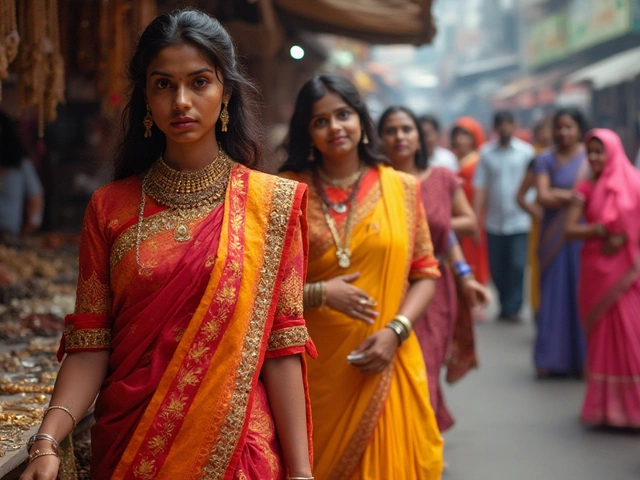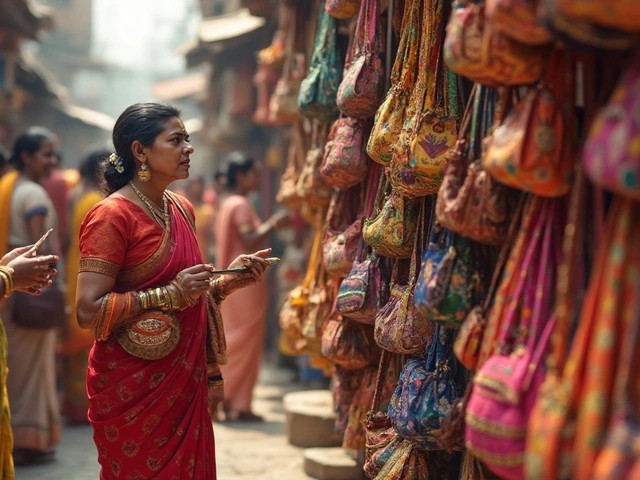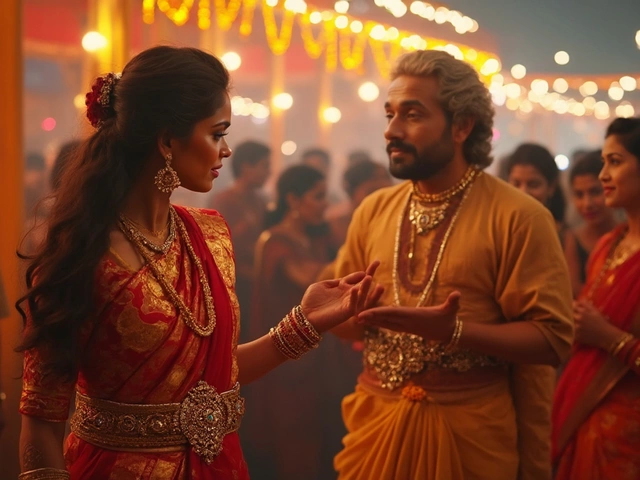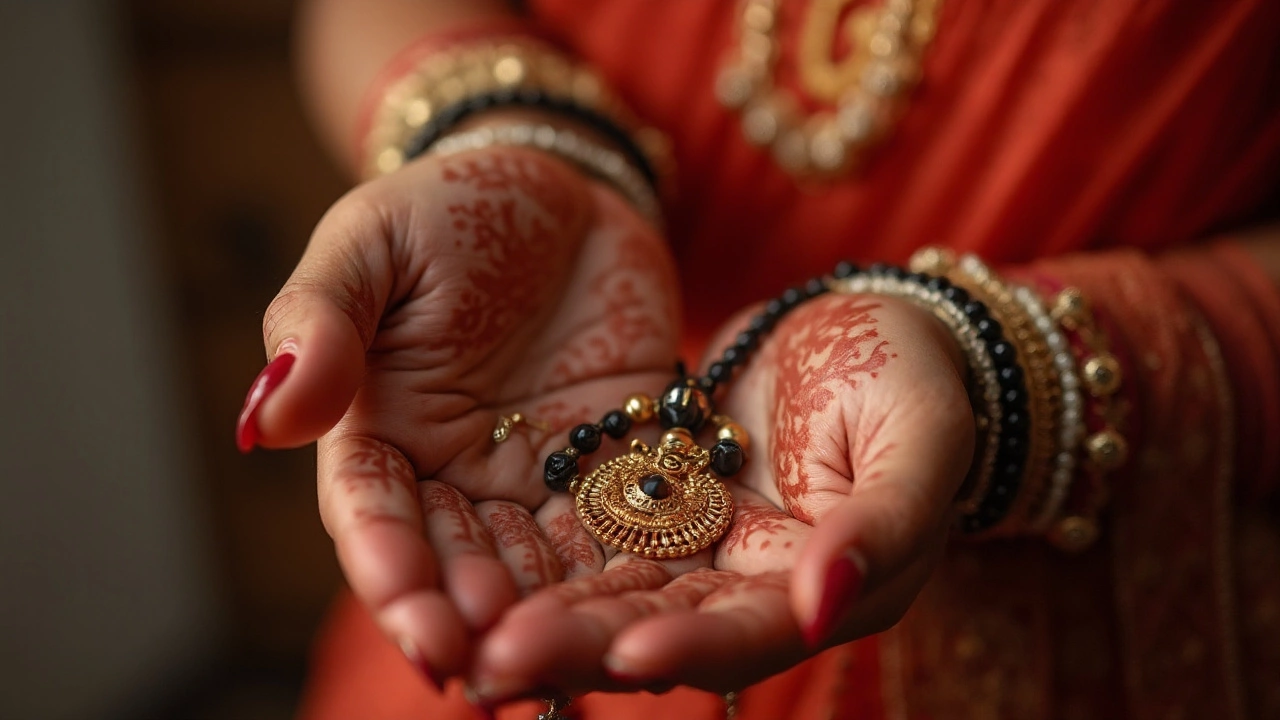
Imagine walking into a bustling Indian wedding—music echoing, flowers everywhere, people laughing in vibrant clothes. At the center of it all, the bride looks radiant. But take a closer look and you'll notice something subtle yet deeply symbolic around her neck: a black and gold beaded necklace, sometimes with a small pendant. That's a mangalsutra—and it's not just jewelry. It is, quite literally, packed with significance.
Translating Mangalsutra: What Do We Really Call It in English?
If you pop the word "mangalsutra" into Google Translate or lean on literal translations, you'll get something like "auspicious thread" or "sacred necklace." But that doesn't quite hit the mark, does it? It's like calling a wedding ring a "metallic band"—technically correct, but it misses the emotional punch.
Let’s get specific. The word itself comes from Sanskrit: "mangal" means "auspicious" or "blessed," and "sutra" means "thread" or "string." So, yes, in the most literal sense, you could say mangalsutra means "auspicious thread." Some people opt for "sacred marriage necklace" when explaining it in English. Others just say "wedding necklace," but that’s pretty generic—almost bland.
No exact English word truly captures its meaning. The closest you’ll find is "symbol of marriage" or "wedding necklace." But even these phrases don’t explain how, in India and among several South Asian communities, the mangalsutra is seen as a badge of marital status, perhaps even more powerful than a wedding ring is in the West. So, when someone asks, "What do you call mangalsutra in English?"—the answer is that we translate it as "sacred marriage necklace" or "symbolic marital necklace." Still, most people just stick with the original: "mangalsutra." It’s like how people globally say "kimono" instead of translating it to "traditional Japanese robe." The original word carries its own weight.
The History and Meaning Behind Mangalsutra
This necklace isn’t a recent fad. The tradition of the mangalsutra goes back centuries, showing up in Sanskrit texts from as early as the 6th century AD. Back in the day, it started as a simple piece—a yellow thread tied by the groom around the bride’s neck as a way to signify that the couple is now bound together. The color yellow is considered sacred in Hinduism. Over generations, the plain thread evolved into gold chains adorned with black beads.
Why black beads? According to tradition, they’re meant to ward off the "evil eye" and protect the marriage from negative energies. The use of gold is no accident, either—it stands for prosperity, luck, and purity. These days, some mangalsutras are all gold, some sport diamonds, and others even mix in colored stones depending on family tradition or regional style.
It’s not just a matter of ornamentation, though. The mangalsutra ceremony, called "tying the knot," is arguably the most important part of Hindu weddings, especially in South India. During the ritual, the groom ties the mangalsutra around the bride’s neck with three knots. Each knot has a symbolic meaning: devotion to the husband, dedication to family, and a lifelong bond together.
| Region | Traditional Name | Style of Mangalsutra |
|---|---|---|
| Maharashtra | Vati | 2 cup-shaped gold pendants with black beads |
| Tamil Nadu | Thali | Leaf-shaped pendant on yellow thread |
| Karnataka | Karimani | Black bead chain with gold coins |
| Andhra Pradesh & Telangana | Pustelu | Gold pendant shaped like a disc |
Each region has its own twist—a badge of identity if you will. Even communities within a region might use specific designs, passed down like a family recipe. It’s not just jewelry. It’s a keepsake, a family heirloom, and a living story all at once.
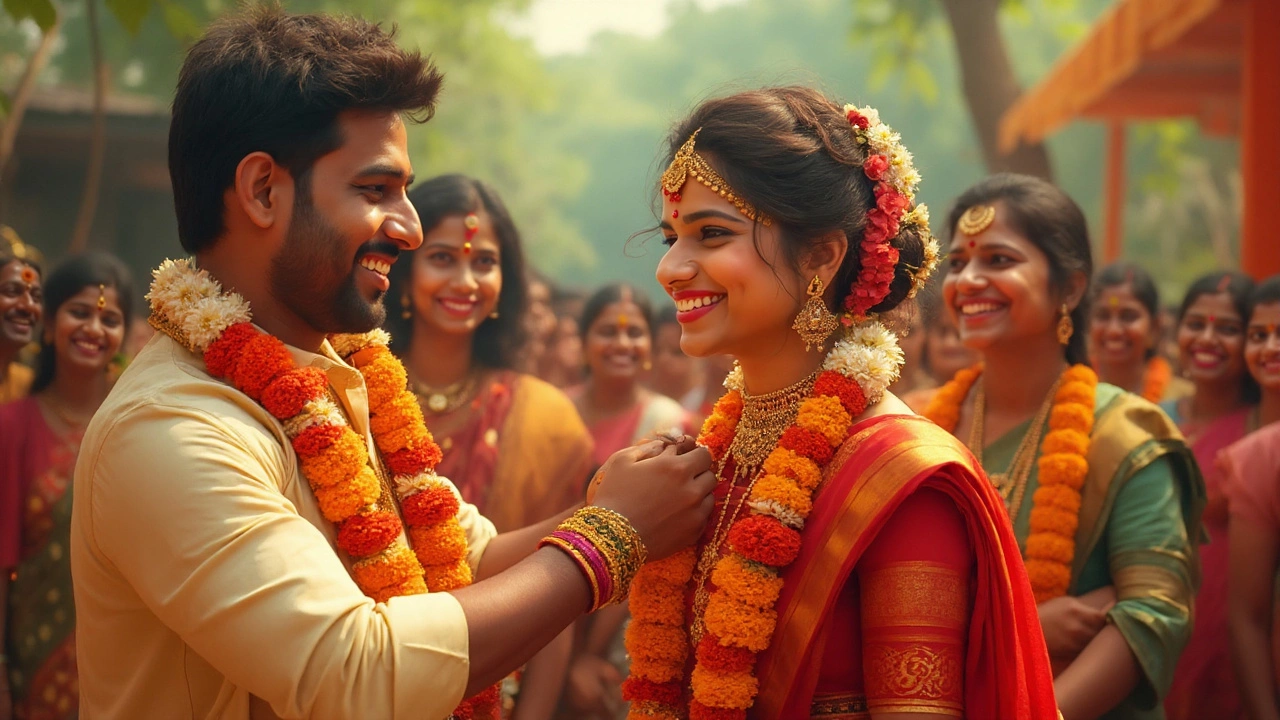
Mangalsutra vs. Wedding Ring: More Than Just a Necklace
If you compare Indian and Western wedding customs, the mangalsutra shares the wedding ring’s purpose—a public sign that you’re married. But the similarities pretty much end there. Most Western wedding rings are plain, worn on the hand, with some private emotion attached. The mangalsutra, in contrast, sits at the heart—literally at the neck—and is both a mark of marriage and a protective charm.
There’s data to back this up. According to a 2023 survey by India Today, 74% of married Indian women said they wear their mangalsutra every day, compared to only 42% of married women in the West wearing their wedding ring on a daily basis. For many, it’s as much about faith and tradition as about fashion. Some even believe that taking it off brings bad luck—my wife Maya won’t even remove hers while showering. It’s that deep.
Another interesting bit—mangalsutras are getting modern makeovers. A 2024 report by Jeweller’s Federation of India showed that sales of "minimal" mangalsutra designs jumped by 38% that year. Younger brides want something light enough to wear to work, with pendants shaped like hearts or initials, but the symbolic power remains. You’ll even find Bollywood stars flaunting mangalsutras with diamonds and colored gems on Instagram—it’s no longer just about sticking to tradition, it’s about expressing yourself within it.
Here’s the kicker: while many older women might only ever show their mangalsutra at family events, the new generation treats it as a badge of pride. Wearing one says, "I am married, and I’m proud of my culture." Unlike many gold necklaces, it's usually not pawned or sold, even in tough times; it's priceless in ways you can't count.
How to Explain Mangalsutra in a Global Context
If you have friends from outside India who ask about the "necklace" you wear, try this: explain that the mangalsutra is more than just jewelry. It’s a direct symbol of marriage—a sign of commitment, love, and protection. No English word does justice, but "marriage necklace" or "sacred marital thread" gets pretty close in spirit.
For anyone thinking of gifting a mangalsutra, be mindful; it's not just a fashion item. It’s meant for married women, and its significance may get lost out of context. It's best for someone who truly understands and respects its place in Indian culture.
Some tips for choosing or explaining a mangalsutra:
- Opt for a design that matches the wearer’s personality, but keeps the traditional black beads or gold chain.
- If a friend asks why you never take it off, share the story behind its protection and symbolism.
- Care for it like a treasured keepsake. Clean it occasionally, but don’t use harsh chemicals.
- When in doubt, just call it “mangalsutra”—it’s a word with its own power and history, recognized well beyond borders nowadays.
Keep in mind, trends are always changing. Now you’ll find mangalsutra bracelets, rings, even anklets—each attempting to blend old meaning with new style. Yet, the heart of the tradition stays put. It’s about connection, memory, and identity. Whether you think of it as a sacred thread, a bridal necklace, or simply say "mangalsutra," its story is as golden as the metal itself.
